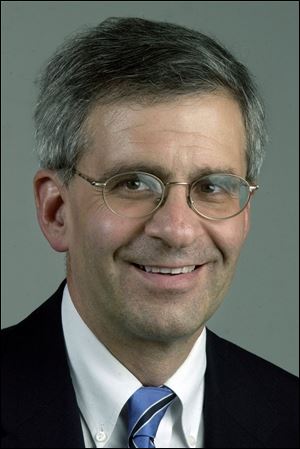
COMMENTARY
The Obama Doctrine: His vision is at once expansive and narrow . . .
6/1/2014
Shribman
For nearly two centuries, the United States has conducted its Western Hemisphere diplomacy according to the precepts of the Monroe Doctrine, formed in 1823 and designed to keep European powers out of hemispheric affairs.
America’s involvement in Latin America was expanded substantially by the 1904 Roosevelt Corollary to the Monroe Doctrine, which proclaimed American willingness to intervene in the region. America’s reach was extended again by the Truman Doctrine of 1947, designed to contain communism as the Cold War chilled.
Have we just witnessed the expression of the Obama Doctrine, at once more expansive and less ambitious than the doctrines that preceded it?
In two important speeches in recent days, President Obama has shrunk the U.S. role — in Afghanistan, for instance, where troops are to be withdrawn by the end of 2016 — even as he expanded the country’s global footprint, primarily in Africa and Asia, where he says new terrorist threats reside.
At the heart of the Obama Doctrine — a term that he never used and that may be an over-interpretation of its scope — is the notion that the principal threat to American security comes from a discrete but exceedingly worrisome source.
That threat, according to Mr. Obama, comes not from nation-states, which prompted the doctrines of Presidents James Monroe, Theodore Roosevelt, and Harry Truman. Nor does it come from a centralized terror organization such as al-Qaeda, the preoccupation of American national-security efforts for the past dozen years.
That threat also does not come from “trouble spots” — a classic Cold War locution applied to Berlin, the Korean peninsula, and Southeast Asia, especially Vietnam, Laos, and Cambodia. It comes from troubling rogue groups in places such as Yemen, Syria, Nigeria, Mali, Somalia, and elsewhere.
The President could not have made this more plain: “For the foreseeable future,” Mr. Obama said, “the most direct threat to America at home and abroad remains terrorism.”
That sentence included none of the “mission accomplished” bravado of George W. Bush after the second invasion of Iraq, nor any of the soothing reassurance about the eclipse of al-Qaeda that Mr. Obama has offered in years past. Both expressions today look worse than premature. They look naive — and dangerous.
Whether what Mr. Obama spoke about last week deserves spelling “doctrine” with an uppercase or a lowercase letter, he set out a more modest American role — expanding American “reach without sending forces that stretch our military too thin or stirs up local resentments” — even as it establishes a wider security horizon in Asia and Africa.
In the Cold War, American attention tended to be concentrated on one place at a time. This new threat requires a worldwide focus, which is to say no particular focus at all.
Mr. Obama’s vision may be more descriptive than prescriptive, as the United States seems already to have adopted this doctrine.
The power politics of the 19th and 20th century has seemed passe throughout the Obama years, which is one reason the response to the Russian advances in Ukraine seemed so tepid.
Large nation-states still dominate the world. Threats still reside in countries such as Iran and North Korea. But most of the gunfire and explosives come from decentralized terrorist cells scattered about the globe.
Those groups have the attention of Mr. Obama and prompted his proposal for a $5 billion counterterrorism partnership. And it is those groups whose activities the Obama Doctrine — flawed or limited or perhaps too modest — is designed to counter.
The doctrines that preceded Mr. Obama’s were conceived as long-term if not permanent themes in American foreign policy. The longevity of Mr. Obama’s doctrine will be determined by whether it succeeds or fails in the short term.
David Shribman is executive editor of the Pittsburgh Post-Gazette.
Contact him at: dshribman@post-gazette.com